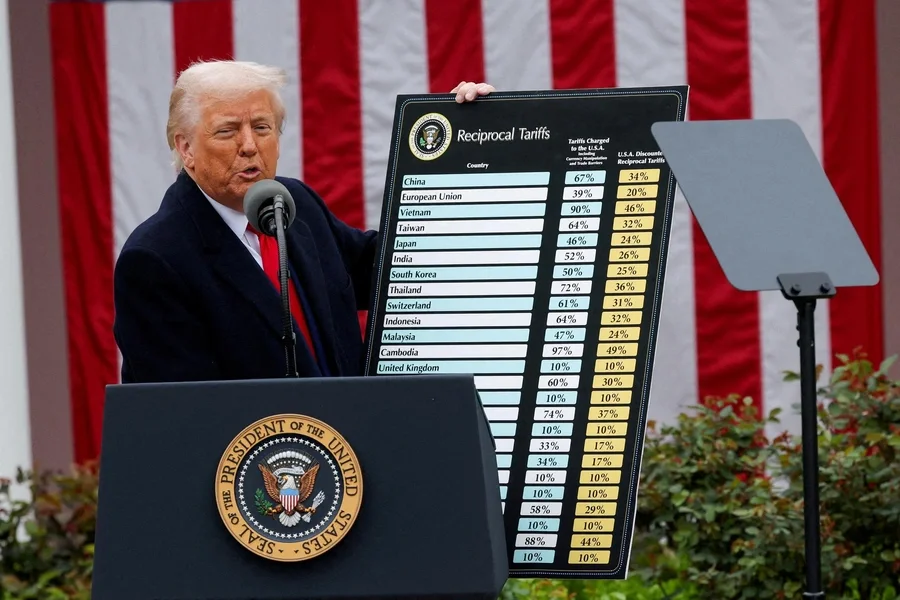Donald J. Trump v. Federal Reserve
President Trump has recently clashed with the Fed board over interest rates and independence
Photo Credits: ABC NEWS, Reuters, AD
On Tuesday, a federal judge blocked President Trump's attempt to remove Governor Lisa Cook, saying “Trump has not stated a legally permissible cause for Cook's removal.” Trump's reasoning for firing Cook, whose job is independent of the executive branch, is that she committed mortgage fraud, which Cook denies, contending that “the mortgage fraud allegation is a thinly veiled pretext for Trump to seize more control over the crucial interest rate-setting board, whose decisions he has long maligned” (Politico). President Trump wants Cook removed so he can fill that seat with a governor who will vote to lower interest rates. The Fed last voted on July 30th, 9-2 to keep the federal funds rate steady at the 4.25% to 4.5% range. The two governors opposing the action are Michelle Bowman and Christopher Waller, whom President Trump appointed in his first term.
Governors Michelle Bowman and Christopher Waller
Credit: Barrons
President Trump has not tried to hide the fact that he believes the executive should have control over the Fed, either directly or through new appointees. The Federal Reserve was set up in late 1913 by Congress and signed into existence by President Wilson, in response to multiple “panics” in the early 1900s that troubled the U.S. economy, in particular the Panic of 1907, which derived from a series of widespread withdrawals from various financial institutions.
At the time, the U.S. was one of the only major ‘western’ powers without a central bank… France had the Banque de France, and the UK had the Bank of England, which many banks today are based on. The main goal of central banks is to promote economic stability and growth. They do this through managing monetary policy, things like money supply and interest rates.
Panic of 1907
Credit: Illinois University
There are two sides to this battle, and the first is Trump. The president wants rates cut to help lower the interest repayment on bonds and subsequently make it cheaper to lower the national debt. Lowering rates would also make it cheaper for Americans to buy homes, repay student debt, and anything that you might get a loan on. The White House believes that lowering rates will stimulate the economy and offset any economic harm the tariffs might bring (although they don’t discuss the second part of that). Many economists believe that Trump’s motive for lowering rates is purely political, and I won’t argue against it. The cheaper things are, the happier the populace is. For the majority of Americans, the economy is the most pressing issue, and President Trump wants to address it.
President Donald Trump delivers remarks on the reciprocal tariff policy in the Rose Garden on April 2, 2025.
REUTERS/Carlos Barria
Secondly, Jay Powell and the majority of the board are still concerned about inflation. Their long-term goal is to keep inflation around 2% and as of writing this article, inflation sits at 2.92%. When the Fed lowers rates, spending increases because consumers have more disposable income. But ultimately, the Fed just wants the economy to make stable progress and not risk increasing inflation if they don’t have to. However, at the Fed meeting next week, they are expected to cut rates by about 25 basis points.
Federal Reserve Board
Drew Angerer / Staff / Getty Images
Finally, the most important point in this article that I want to make is that Fed independence is vital to seeing long-term economic success. If politicians from either party can make changes to monetary policy on the only grounds that it is the popular decision, our system will crumble. The Fed's independence is similar to that of the Supreme Court. The court must make rulings on a case based on what the Constitution says or implies, not if it is a popular decision. The Fed must be able to make hard data-driven decisions free from political pressure.
Furman, Jason. “The End of the Federal Reserve as We Know It?” Harvard.edu, 8 Jan. 2025, www.hks.harvard.edu/centers/mrcbg/publications/end-federal-reserve-we-know-it.
Macias, Amanda. “A Look at the Unfolding Battle between Trump and Powell over Fed Policy.” Fox Business, 19 July 2025, www.foxbusiness.com/politics/look-unfolding-battle-between-trump-powell-over-fed-policy. Accessed 14 Sept. 2025.
Moen, Jon, and Ellis Tallman. “The Panic of 1907 | Federal Reserve History.” Www.federalreservehistory.org, 4 Dec. 2015, www.federalreservehistory.org/essays/panic-of-1907.
“What Is Fed Independence—and Why Does It Matter? | Poole Thought Leadership.” Poole Thought Leadership, 24 Apr. 2025, poole.ncsu.edu/thought-leadership/article/what-is-fed-independence-and-why-does-it-matter/.
“Why the Fed Still Hasn’t Cut Rates despite Pressure from President Trump | Columbia Business School.” Columbia Business School, 30 July 2025, business.columbia.edu/insights/economics/fed-interest-rate-trump.






